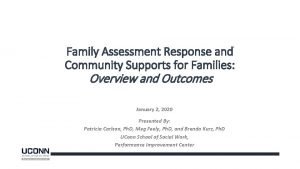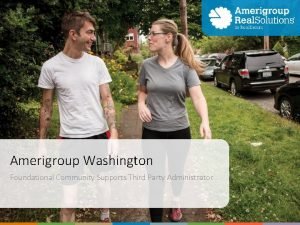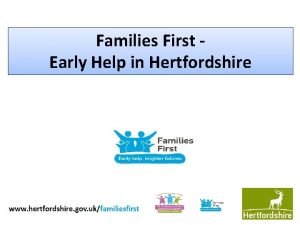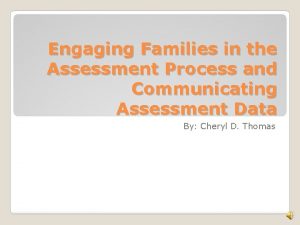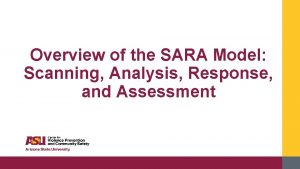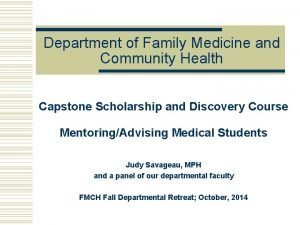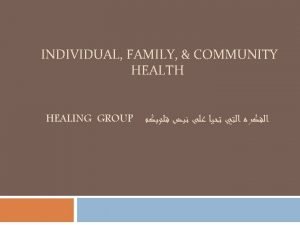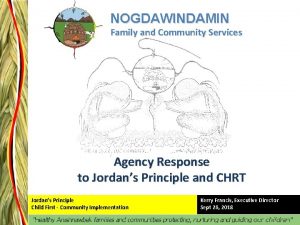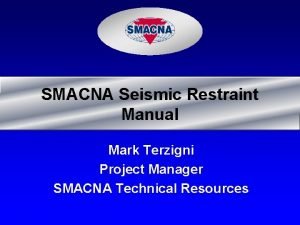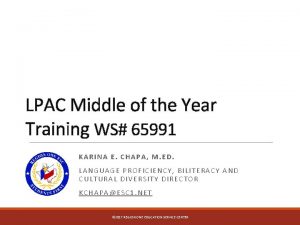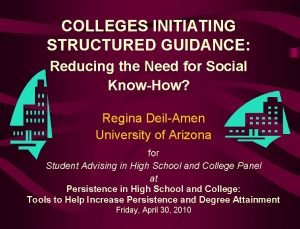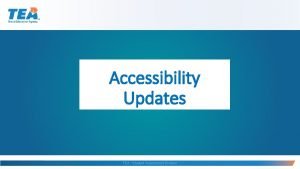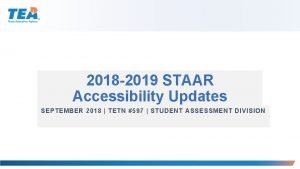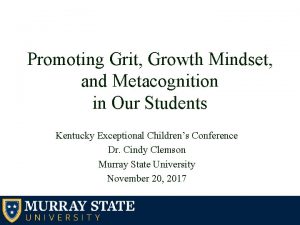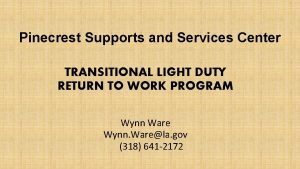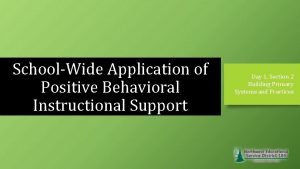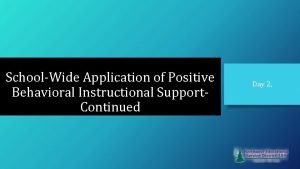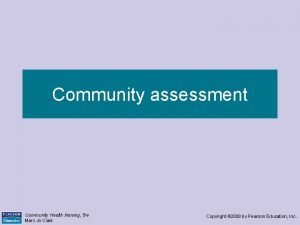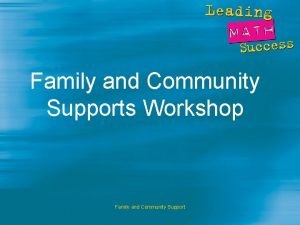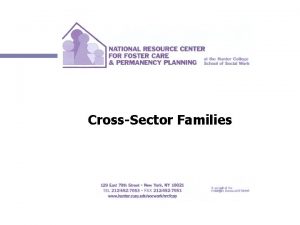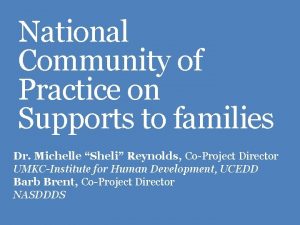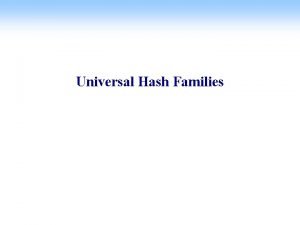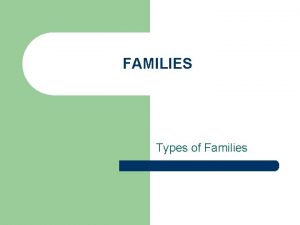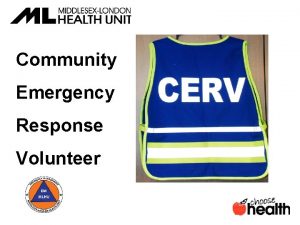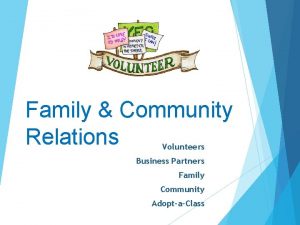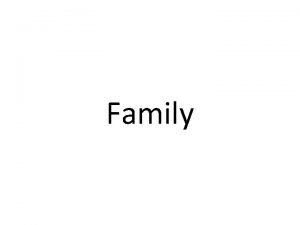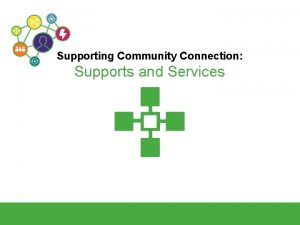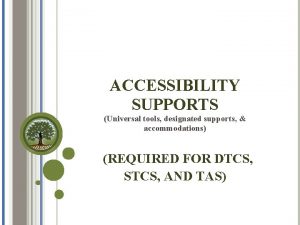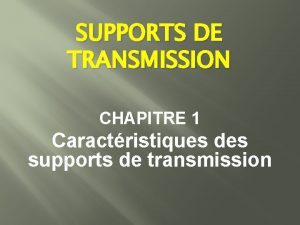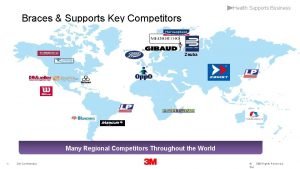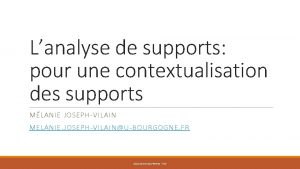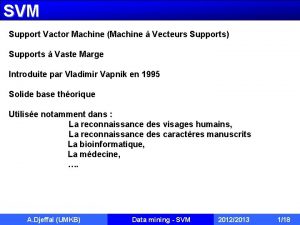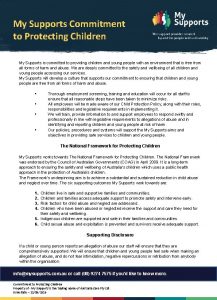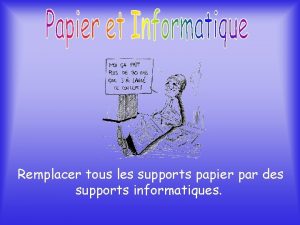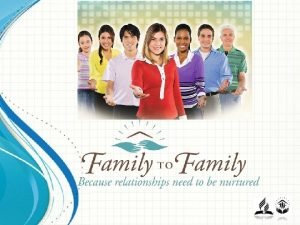Family Assessment Response and Community Supports for Families


























- Slides: 26

Family Assessment Response and Community Supports for Families: Overview and Outcomes January 2, 2020 Presented By: Patricia Carlson, Ph. D, Meg Feely, Ph. D, and Brenda Kurz, Ph. D UConn School of Social Work, Performance Improvement Center

Family Assessment Response (FAR) 2

Differential Response (DRS) Implementation in CT DRS is a system reform that enables child protective services (CPS) to differentiate its response to reports of child abuse and neglect Allows a customized response that: - Better ensures child safety - Promotes child and family well-being - Better meets the needs of families Is expected to: - Decrease rate of repeat maltreatment - Reduce likelihood of families becoming re-involved with DCF - Reduce the number of children entering care 3

CT DCF’s Two-Track System Intake Accepted Reports Family Assessment Response Investigations 4

Family Assessment Response (FAR) ü Implemented DRS in March 2012 ü Accepted CPS Report – meets statutory definition of abuse/neglect ü 72 hour response (lowest response time available) ü Rule-out criteria established ü Track change from FAR to Investigations based on safety and risk concerns 5

Family Assessment Response (FAR) ü Use of Structured Decision Making (SDM) to help inform critical decisions ₋ Screening and Response Priority Tools at Careline ₋ Safety and Risk Assessments at Intake ü Assessment of family’s protective factors ü No formal determination/finding (i. e. no victim/perpetrator) ü Assess level of need and willingness to engage in services 6

In 2019, almost half of all accepted maltreatment reports assigned to FAR 70. 0% 62. 6% 62. 3% 60. 0% 58. 7% 58. 2% 54. 6% 50. 0% 45. 4% 41. 8% 41. 3% 37. 7% 37. 4% 30. 0% 20. 0% 10. 0% 2015 2016 2017 SFY of Report's Accept Date INV 2018 2019 FAR 7

Families Served by FAR • There has been a total of 59, 667 unduplicated families admitted to FAR since its implementation in March 2012. • The number of FAR families with approved report(s) has increased since FY 17, with the largest number admitted (12, 059) in FY 19. 8

Demographics – FAR FY 19 Race/Ethnicity by Region Family Composition: • Single parent families - 42. 4% • Two parent families - 33. 7% Age of children: • Children under five - 30. 6% CPS History • Prior reports – 15. 7% • Prior substantiated reports – 2. 1% Reporter: • School personnel - 40. 9% • Police - 16. 3% • Mandated reporters: 86. 5% 9

Risk & Safety – FAR FY 19 • For FY 19 most (74. 3%) of FAR families were scored as low or very low risk. • 99. 9% of FAR families had a safety assessment that was scored as safe or conditionally safe. 10

FAR 12 -Month Subsequent & Substantiated Report Rates 11

FAR 12 -Month Subsequent & Substantiated Report Rates by Risk Assessment Score 12

FAR & INV Key Differences FAR INV ₋ Prior Reports 15. 7% 23. 6% ₋ Prior Substantiated Reports 2. 1% 4. 2% ₋ Very Low Risk 21. 3% 10. 9% ₋ Low Risk 53. 0% 36. 3% ₋ Moderate Risk 24. 5% 43. 1% ₋ High Risk 1. 2% 9. 7% Subsequent Report Rate 27. 6% 28. 2% Substantiated Subsequent Report Rate 6. 5% 9. 2% CPS History Risk Assessment Scores 13

Community Supports for Families (CSF) 14

Overview of CSF • DCF offers a voluntary, family-driven, individualized program, Community Support for Families (CSF) administered by seven community partner agencies throughout the state. • CSF is for families that are discharged from FAR but are still in need of additional support. • CSF utilizes a Wraparound philosophy and approach designed to; • Promote child and family well-being, • Build and strengthen natural and community-based supports, • Connect families to resources and services in their community, • Place the family in the lead role of its own service delivery. • CSF is a time limited program (3 -6 months) with an average length of service of 132 days. 15

Community Support for Families • Utilizes Evidence-based tools to assess strengths and needs of families to help inform service delivery • • NCFAS-G (formal assessment) Protective Factors Survey (family perspective) • Family Satisfaction Survey to gather critical feedback • Access to wrap funding to meet basic, concrete needs • 80% of funding is used to meet basic needs 16

CSF Families CSF families are a subset of the FAR families in Connecticut and differ from this general differential response population in several important ways. • More CSF families had at least one prior CPS report (20. 5% compared with 15. 7% of FAR families) • A higher proportion of CSF families were single parent families (60. 8% compared with 36. 7% of FAR families) • Fewer CSF families were scored as low or very low risk (72. 1% compared with 74. 3% of FAR families) • More CSF families were scored as moderate or high risk (27. 9% compared with 25. 7% of FAR families) 17

Engagement Referral Only Evaluation Only Following referral from DCF, if the family decides they no longer wish to participate in the program, the case is categorized as Referral Only. In these cases, no face-to-face contact with the family has been made by CSF. If within 45 days of opening, the episode closed and/or there was no Family Team Meeting, and the Plan of Care was not established. 75% of families fully engage in services 18

Families Admitted by CSF • There has been a total of 10, 432 families served through Community Support for Families (CSF) since its implementation in March 2012. • A total of 2, 628 families were active in FY 19. 19

Demographics – CSF FY 19 Race/Ethnicity by Region Family Composition: • Single parent families – 60. 8% • Two parent families – 24. 8% Age of children: • Children under five - 31. 6% CPS History • Prior reports – 20. 5% • Prior substantiated reports – 2. 05% Reporter: • School personnel – 39. 1% • Police – 15. 4% • Mandated reporters: 85. 9% 20

Risk & Safety – CSF FY 19 • CSF families had a slightly higher risk assessment scores than FAR Families. ₋ Fewer CSF families (72. 1% compared with 74. 3% of FAR families) were scored as low or very low risk. ₋ 27. 9% of CSF families were scored as moderate or high risk compared with 25. 7% of FAR families. ₋ Statewide, 99. 8% had a safety assessment that was scored as safe or conditionally safe. 21

Needs Assessed/Needs Addressed Top three needs assessed: • Basic needs • Social supports • Parenting skills Top three needs addressed/received: • Basic needs • Social supports • Household relationships Top three needs unavailable: • Housing • Employment • Mental Health Child 22

Performance Indicators NCFAS-G • There is a statistically significant improvement in the overall subscale rating at intake when compared to closure on all domains (environment, parental capabilities, family interactions, family safety, child well-being, social/community life, self-sufficiency, and family health). • The largest proportion of families experiencing positive change occurred in the following three domains: Self-Sufficiency (38. 0%); Child Well-Being (33. 7%); and Family Interactions (34. 6%). Protective Factors Survey • Overall, domains show statistically significant improvement from intake to discharge on all domains (social emotional support, concrete support, nurturing and attachment, family functioning/resiliency, and knowledge of parent and child development). • The PFS domain “concrete services” has the highest rate of improvement. 23

CSF 12 -Month Subsequent & Substantiated Report Rates 24

CSF 12 -Month Subsequent & Substantiated Report Rates By Risk Assessment Scores 25

Key Takeaways Since 2012, FAR and CSF have grown and evolved while always keeping the safety of children as its main focus and evaluation results have been positive. • Both programs are serving appropriate families. • Of the FAR/CSF families that have subsequent reports, most are not substantiated. • Substantiated subsequent report rates are lower than the national standard for recurrence of maltreatment. 26
 Little families
Little families Family assessment response
Family assessment response Fcs amerigroup
Fcs amerigroup Welcoming all families into the school community
Welcoming all families into the school community Natural response and forced response
Natural response and forced response Natural response circuit
Natural response circuit A subsequent
A subsequent Family first hertfordshire
Family first hertfordshire Involving families in the assessment process
Involving families in the assessment process Sara model
Sara model Coordinated community response training
Coordinated community response training Community response unit
Community response unit Family and community health advisor
Family and community health advisor Includes the individual and the family community is
Includes the individual and the family community is Duke medicine grand rounds
Duke medicine grand rounds Nogdawindamin meaning
Nogdawindamin meaning Smacna hangers and supports
Smacna hangers and supports Staar alt 2 justification examples
Staar alt 2 justification examples Staar content and language supports
Staar content and language supports Structured guidance and supports
Structured guidance and supports Tea staar designated supports
Tea staar designated supports What are content and language supports
What are content and language supports Metacognition and growth mindset supports grit
Metacognition and growth mindset supports grit Pinecrest supports and services center
Pinecrest supports and services center Positive behavioral interventions and supports
Positive behavioral interventions and supports Positive behavioral interventions and supports
Positive behavioral interventions and supports Anderson and mcfarlane community assessment wheel
Anderson and mcfarlane community assessment wheel

